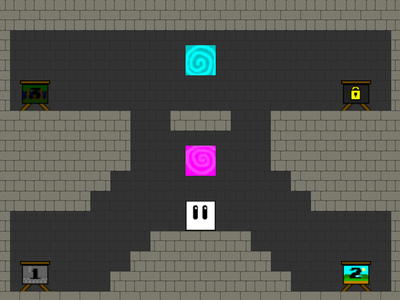
The syntax to declare a vector is this:Ĭopy code Copied to clipboard. We can also specify if they hold booleans, integers, or floating point values. Two and three-dimensional vectors are often used for positions, texture coordinates, or colors without an alpha channel, while four-dimensional ones are used for colors with an alpha channel. In programming, we usually represent them as an array where the number of components corresponds to the dimension. If you are unfamiliar with them, they are a mathematical term represented as a matrix with only one column. That is why they are implemented as a base type in GLSL. Vectors are very important when working with shaders. These can be used in both the vertex and fragment shaders, but are read-only. Uniform: Variables that change per object and are passed by the user to the shader. These are available for writing in the vertex shader, but are read-only in the fragment shader. Varying: Variables used to pass data between the vertex and fragment shaders. These include information such as vertex position, texture coordinates, vertex color, and vertex normal. These can change per vertex and are read-only. These qualifiers help the shader understand the purpose and scope of each variable.Īttribute: Variables passed in by OpenGL to the vertex shader. If you have created a shader in GameMaker Studio 2, you might have noticed these words in the default pass-through shader. Variable Qualifiers in Shaders: Attribute, Varying, and Uniform The math and techniques should be similar between all three languages, save for a few syntax differences here and there. In this tutorial, I will use GLSL ES as my shader language since it's the one that provides the best portability across systems. GameMaker Studio 2 allows users to write shaders in GLSL (OpenGL Shader Language), HLSL (High-level Shader Language, used when working with DirectX), and GLSL ES (a subset of GLSL which is common in mobile devices). The limitation is that we only have access to the initial state of the sprite, so we don't know about any modifications done to other pixels since we can't know for sure the code has run on them yet. This is helpful for shaders because we can run the shader code of thousands of pixels concurrently. In contrast, modern GPUs can perform thousands, and even tens of thousands, of tasks running at the same time. Each core can perform one task at a time, so by taking advantage of multiple cores, we can perform that many tasks simultaneously. Modern CPUs typically have between two to eight cores. Shader code is usually run by the GPU thanks to its efficiency. For example, if you want a shader to make your sprite be black and white, then you'd calculate which shade of grey each pixel needs to be to create the effect. In your fragment shader code, you perform operations and calculations to determine the color of that pixel to get the effect you want. This allows us to change the vertex position and color before passing it over to the fragment shader since the vertex shader is run earlier.įor the fragment shader, you can imagine the same loop as before, but this time it goes over every single pixel in your sprite, giving you information such as location and color of that pixel. Now, imagine we have a for loop that goes over every vertex and runs the code inside the vertex shader for each. This leaves us with six vertices per sprite, but two of those are the same one, so we should only worry about four. Each sprite is formed by a rectangle, but computers like to draw triangles, so those rectangles are split into two triangles. However, I came up with an analogy that made it much simpler for me to think about them. When I first started learning about shaders, I had a tough time getting my head around how they work.

This difference comes with its own set of rules and limitations, but we'll cover those later.Įach shader is made up of two separate scripts: a vertex shader and a fragment shader (also referred to as pixel shader). Shader code is similar to regular code, but it is (almost always) run by the GPU (your graphics card), not the CPU (your processor). Initially created to provide shading for lighting (hence the name), they are now used to produce a huge variety of effects. De-Constructing the Default Pass-Through Shader.Variable Qualifiers in Shaders: Attribute, Varying, and Uniform.To follow along, you do not need any previous knowledge of these features, but it is necessary that you have a basic understanding of programming and know your way around GameMaker Studio 2. They are also among the most advanced features offered by GameMaker Studio 2, but I will try to explain everything as simply as possible in this post. Shaders are often used to create beautiful graphical effects in games. Written in November 2017 by Alejandro Hitti, a video game programmer and designer from Venezuela.


 0 kommentar(er)
0 kommentar(er)
